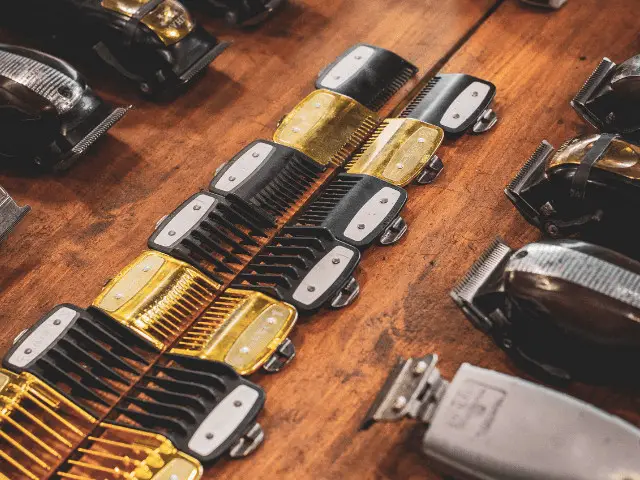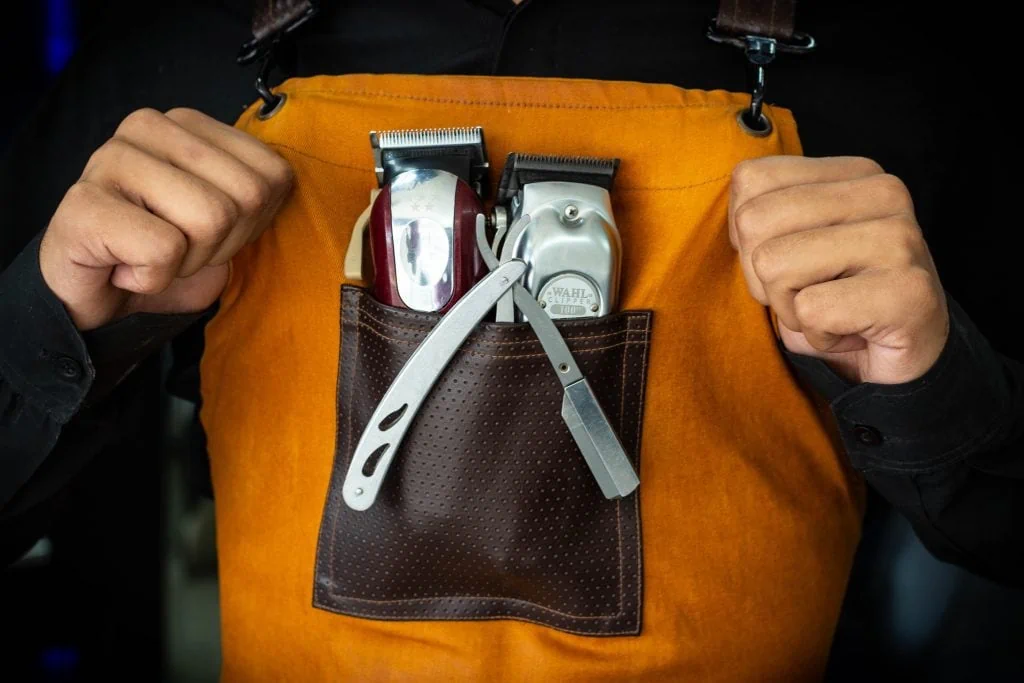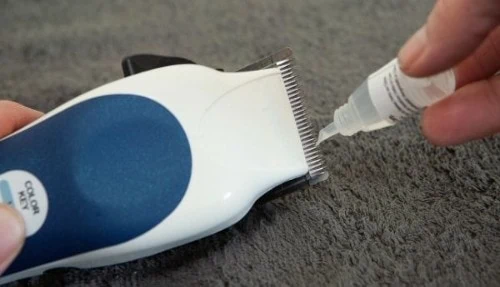If you think that you can solely rely on a good clipper and your skills to cut hair, you couldn’t be more mistaken.
How?
Especially if you’re a beginner, you need to be wary of the different accessories that can impact a haircut - one of which is the clipper guard. Now, we understand this can be confusing because of the different guard sizes, so we prepared a comprehensive guide to help you differentiate them.
Of course, this isn’t just a guide for barbers; you’d be surprised that customers can use this as well!
So if you’re wondering how clipper guards work, read further to find out.
Page Contents
An Overview Of Clipper Guards
A clipper guard is one of the accessories that determine your hair clipper settings. It’s a plastic attachment that sticks right into the clipper blades.
As the name suggests, it acts as a “guard” that prevents the clippers from cutting your hair shorter than a particular length.
So, why should we care about clipper guards?
Whether you want to start learning how to use clippers or you tend to get into specifics with your barber when describing your next haircut, you need to be aware of how clipper guards work if you want to achieve a particular style.
To be specific, you need to be wary about your clipper guard’s size.
Clipper guards are typically labeled with a number ranging from zero to twelve, with each number corresponding to how far they would cut.
However…
Keep in mind that these numbers aren’t straightforward measurements. When you see a guard labeled as one (#1), that’s not equivalent to 1”.
Each number has its assigned measurement conversion. In this case, #1 corresponds to ⅛” in size, which means that the clipper won’t cut any hair shorter than ⅛”.
Additionally, these numbers may refer to the haircut sizes. For example, you might hear someone at the barbershop request a #2 on the sides and a #7 on the top.
To put it simply, the clipper numbers provide you with the specific size of a haircut, making them necessary to pull off and maintain fades and other particular cuts.
Typical Clipper Guard Sizes
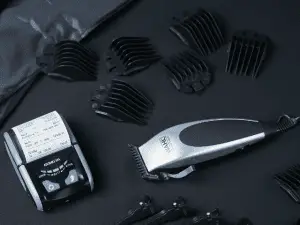
When looking for clipper guards, most brands carry sizes from zero to eight. However, other brands may expand to other sizes, such as ten and twelve. Some even have a different label for a specific size.
We’ll compare the sizes of popular brands such as Wahl, Andis, Oster, Remington, and BaByliss to show this.
Below, you can see the clipper guard size chart of each brand that presents the conversion of the numbers in millimeters (mm) and inches (“).
| Size In Millimeter (mm) | Size In Inches (“) | Wahl Clipper Guard Number | Andis Clipper Guard Number | Oster Clipper Guard Number | Remington Clipper Guard Number | BaByliss Clipper Guard Number |
| 1.5 | 1/16 | 0.5 | 0 | 0 | 0 | 0.5 |
| 2.4 | 3/32 | 0.5 | ||||
| 3 | 1/8 | 1 | 1 | 1 | 1 | 1 |
| 4.5 | 3/17 | 1.5 | ||||
| 4.8 | 3/16 | 1.5 | 1.5 | |||
| 6 | 1/4 | 2 | 2 | 2 | 2 | 2 |
| 10 | 3/8 | 3 | 3 | 3 | 3 | |
| 13 | 1/2 | 4 | 4 | 4 | 4 | 4 |
| 16 | 5/8 | 5 | 5 | 5 | 5 | 5 |
| 19 | 3/4 | 6 | 6 | 6 | 6 | 6 |
| 22 | 7/8 | 7 | 7 | 7 | 7 | |
| 25 | 1 | 8 | 8 | 8 | 8 | |
| 32 | 1.25 | 10 | 10 | |||
| 37.5 | 1.5 | 12 |
However, you might ask yourself, “How do I differentiate these numbers in terms of cutting length?”
These numbers may be confusing at first because there are so many, but we’ll explain what the different hair clipper sizes and how to used for so you can have a broad idea.
How To Differentiate Hair Clipper Guard Sizes
Numbers 0 and 0.5
The #0 (or #0.5) clipper guard is essentially the smallest guard there is. Using this guard, the clippers will cut extremely close to the skin while leaving some hair behind.
Since the hair will be 1/16” at most, having a #0 haircut all over your head will get you a very short buzz cut.
On the other hand…
Having a #0 haircut on the sides will get you a skin fade.
Since the #0 cut often leaves the scalp exposed, this hairstyle is easy to clean and maintain.
However, if you want to go completely bald - no hair whatsoever, it would be better to use a razor or trimmer instead.
Numbers 1 and 1.5
Like the #0 and #0.5, these hair clipper guard sizes are frequently used for buzz cuts and fades.
Although they still leave your scalp exposed, the #1 and #1.5 haircuts are slightly longer than the previous ones. Their sizes are ⅛” and 3/16”, respectively.
Additionally, these clipper guards are used interchangeably with other guards to pull off fades or tapers.
For example, you may start with a #3 at the top, then transition to #2, then #1 as you go down the back and side of your head.
Number 2
The #2 guard is typically the popular choice in the fades territory because it serves as a middle ground between a short and long fade.
Due to its size of ¼”, it makes the hair short but appears full, resulting in minimal scalp exposure. This is a comfortable cut if you want to have short hair without showing your scalp.
Additionally, a #2 haircut is a safe bet for people with thinning hair or thick and bushy hair.
Number 3
The #3 clipper guard has a size of ⅜” and is typically the longest length that barbers use for fade haircuts.
As we mentioned earlier, this guard is typically used with other sizes like #2 and #1 to pull off those excellent fades and buzz cuts.
The #3 haircut still leaves the hair short but fuller. Just like the #2, this works great if you have thinning or thick and bushy hair.
This cut is also quite convenient because short haircuts tend to be low-maintenance.
Number 4
Moving on from the short haircuts of the previous clipper guards, the #4 leaves hair ½” long, which is classified as medium length.
This size cannot produce a short buzz cut, but this is ideal if you want a crew or brush hairstyle - these are essentially longer buzz cuts with a fade or undercut on the sides.
As the middle-length haircut, the #4 works well for more conservative cuts and styles, although this length will require you to have a haircut regularly if you want to maintain it.
Numbers 5 and 6
At ⅝” and ¾” respectively, the length of a #5 and #6 haircut allows you to brush and style your hair.
Additionally, If you are more into tapers than fades, you definitely want to use the #5 and #6 clipper’s guard sizes as they tend to be used interchangeably.
A tapered cut is basically long on the top and short on the sides, with the hair having a gradual decrease as it goes down to your neckline.
Compared to a fade that cuts close to the skin, a taper leaves some length on the side of your head.
This is a great cut if you don’t want to create too much contrast from a longer hairstyle, as tapers tend to be less dramatic than fades.
Numbers 7 and 8
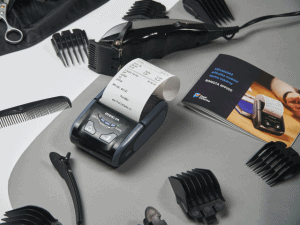
The #7 and #8 guards are the largest sizes for most brands, leaving the hair at the length of ⅞” to a full inch.
There are minimal differences between these two guards, as they tend to serve the same purpose.
They provide a longer taper than #5 and #6, but they are also used to trim the top of the head without the help of scissors.
The #7 and #8 can get you an excellent crew cut, provided that the shorter guards (from #4 down) are used to fade the sides of your head. This gives your head some shape and contrast that balances out the #7 and #8 cuts.
Additionally, any haircut from #7 and #8 allows you to style your hair using gels and conditioners.
Numbers 10 And 12
If you take a look at the five brands on the clipper guard size chart, the #10 is available for both Oster and Wahl clipper settings, but #12 is exclusive to Wahl.
They leave the hair at a length of 1.25” and 1.5”, respectively.
These are rarely used in barbershops but can perform custom cuts from a client’s special request.
Clipper Guards Larger Than 12
If you’re wondering whether or not a label larger than #12 exists, the answer is yes.
A clipper guard with a size of 2” is considered #16 in the industry, but there are even guards that are 3” and 4”! Can you imagine that?
However, they are considered non-standard equipment because of the low demand and supply. They’re not available for the five brands we mentioned, but you can find them if you look hard enough.
They are rarely used due to the long cuts they make. If your hairstyle requires long cuts, might as well use scissors because, at that point, most people are able to estimate the length by hand.
However, there’s also the possibility that people confuse the number labels with their actual measurements.
As we mentioned, the numbers shouldn’t be taken at face level. The #3 doesn’t mean the clipper guard measures 3”.
What To Consider When Buying Clipper Guards
Availability Of Sizes
As we mentioned, a lot of the haircuts such as fades and tapers can only be pulled off by interchanging between different guard lengths.
Therefore:
Whenever you purchase a set of barber clippers, you need to consider the guard sizes available in that set.
Sometimes, a clipper set only comes with four guards, while some don’t even come with guards at all. In this case, we recommend upgrading to a set of eight attachments or more.
Additionally, the guards from one brand aren’t always compatible with other clipper brands, so you also need to consider the available sizes of that brand.
Quality And Type Of Clipper Guards
Going back to barber clipper sets, there’s a question of quality about the clipper guards that come with them.
They are often cheap, low-quality, and brittle, which can be a problem because clipper guards must always be securely attached and properly cleaned. Otherwise, they might pop off and break, which can cause damage to a haircut.
This can be particularly embarrassing if you’re cutting someone else’s hair. Yikes!
Upgrading to a higher quality guard set from the same brand or a third-party brand will minimize the chances of these embarrassing moments.
To be specific, brands like Andis have magnetic clipper guards that are easy to attach and detach from the clipper, making it more efficient to switch between guards.
Meanwhile, brands like Wahl and Remington have color-coded guards, where each color represents a specific size.
Although they improve the process of remembering the sizes, color-coded guards are quite expensive and only sold in complete sets. You might want to consider the value you’re getting, as only professionals tend to benefit from them.
Apart from that, how you manage your tools and accessories plays a key role in maintaining their quality.
Here is a guide for different types of clipper guards:
Clipper Blades
Similar to the guards, the blades also have their own measurements, with different numbers corresponding to different sizes.
While the guard prevents the clipper from cutting the hair too short, the size of the blade determines how precise the clipper is.
Essentially, the guard and the blade affect the length of the haircut, so both attachments should be considered.
Frequently Asked Questions
What Are The Sizes Of Clipper Guards?
As shown in the clipper guard size chart, most clipper guards range from 1/16” to 1.5”, or 1.5mm to 37.5mm. These lengths are necessary for certain haircuts such as buzz cuts, fades, and tapers.
What Does Each Clipper Guard Number Mean?
Each number corresponds to a certain size of the clipper guard. For example, a #1 guard has a length of ⅛” or 3mm. Remember, these numbers aren’t supposed to be taken at face value.
What Is The Biggest Clipper Size?
For most brands, the biggest size available is #8 (1”/25mm). However, Oster has the #10 (1.25”/32mm), while Wahl goes up to #12 (1.5”/37.5”). Additionally, some third-party manufacturers have guards that go beyond this size chart, going up to 2”, 3”, and even 4”.
What Size Is A 1/2 Clipper Guard?
A ½, or #0.5 clipper guard has different measurements depending on the brand. Of the five brands we mentioned, the #0.5 from Wahl and BaByliss corresponds to a size of 1/16” or 1.5mm. However, the #0.5 from Andis has a size of 3/32” or 2.4mm.
To Cut It Short...
The clipper guard is one of the essential tools in cutting hair. Especially for beginners, it serves as the “crutches” that guide them through a haircut. Without these tools, it would be difficult for barbers to provide the cuts that customers want. Therefore, it is necessary to learn how the different clipper guard sizes work.
With that, we hope that this guide is helpful to you - whether you’re a barber or a customer. Maybe someday, you’ll gain enough technical skills that you wouldn’t need all these clipper guards anymore!
How cool is that?

